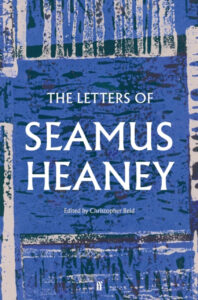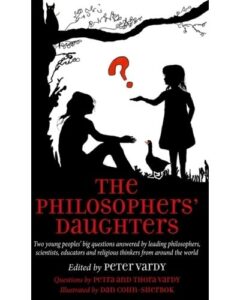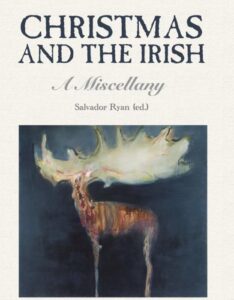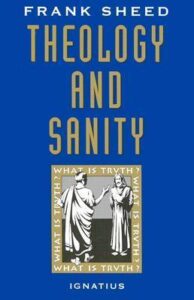Thomas McCarthy
 Theo Dorgan’s Once Was A Boy (Dedalus Press, Dublin) is a memoir of childhood told through poems, many of them written in highly effective tercets.
Theo Dorgan’s Once Was A Boy (Dedalus Press, Dublin) is a memoir of childhood told through poems, many of them written in highly effective tercets.
The book is a singular act of recovery, like the best memoir, of a near-inaccessible past through precise description and a child’s heightened awareness.
This is a wonderful book from a star poet of Cork’s famous North Mon – that Northside world of a working father’s ‘Brylcreem and pipe smoke’ and of a boy-poet flourishing in the optimistic Lemass Era.
And from Faber comes The Letters of Seamus Heaney, edited by Christopher Reid (Faber, London). Here is “a chance to hear Seamus Heaney’s voice again”, as Reid writes in his introduction; that generous, encouraging teaching voice.
Astonishing letters to Charles Monteith of Faber, to a 16-year-old Paul Muldoon and all the other giant creatures of Ulster writing. For Reid’s brilliant notes, for the essences of greatness within, this has to be one of the books of the decade.
Anthony Redmond

My choice is The Philosophers’ Daughters, edited by Peter Vardy ( Darton, Longman and Todd ).
In this thought-provoking book the philosopher, Peter Vardy, has gathered a number of questions posed by his two young daughters, Petra and Thora, on life and belief.
The children ask many questions about truth and suffering in the world and about the Big Bang Theory etc. Reading this book I am aware that there are many questions but atheism provides no satisfactory answers. In fact, atheism can’t be lived by or put into practice.
The well-known atheist writer, Albert Camus, believed that life has no meaning and that morality is purely relative and subjective. Sartre held similar views.
In spite of this both of them were passionately against racism and colonialism. So they believed that something was evil. Quite simply, civilization itself would collapse if atheistic philosophy were implemented. Good and evil would become meaningless and there would be no objective moral difference between Hitler and Francis of Assisi.
Petra and Thora are obviously intelligent children and they ask the questions we all want answers to, important questions that affect every sensitive person. This book is well worth reading.
Desmond Egan

A few years before he died (in 1999), Michael Hartnett surprised me by sending me his selection of poems from my humble work, translated by him into Irish. The manuscript lay there unpublished – mea culpa – until now. Modesty prevents me from making it my personal book of 2023, though it really is.
So I will choose The Essential Tillich by Protestant theologian Paul Tillich. I have always admired his profound insight into the message of Christ. He points out that doubt is part of believing (otherwise we are sheep); that even the most pessimistic art is a positive (I have always maintained that Beckett was not a laureate of hopelessness – otherwise, why bother writing); and how about this from Tillich: “listening to the cynical denials of God that are an expression of the flight from a meaning of life, we hear the voice of a carefully covered despair” (The Eternal Now) or this, “No actual negation can be without an implicit affirmation…The negative lives from the positive it negates…The act of accepting meaningless is in itself a meaningful act. It is an act of faith” (The Courage To Be).
Tillich also emphasises (as another giant, Roger Scruton, does) the overlooked importance of beauty in our lives. The appreciation of beauty, central to a Christian vision of the created world, is undervalued in our time. Look at contemporary Church art: its banality, its flying saucer churches and bland stained glass; its crude sculpture; its Hollywood faces of Disneyish cuteness; its dilettantic verse.
Tell me (with a few noble exceptions) of much that would be taken seriously, say, by an architect of the quality of Irish Grafton Architects. On all sides we encounter superficiality, lack of technique (i.e. of commitment), an appeal to and reliance on the shortcut of sentimental response.
Church Art in Ireland is too often tainted by kitsch. Let us, with the much-neglected Hopkins, “Give beauty back, beauty, beauty, beauty, back to God, beauty’s self and beauty’s giver”.
Gabriel Fitzmaurice
It was a good year for translations of Irish poetry both into and from the Irish language. The book I most looked forward to was Rogha/Choice (Goldsmith Press) a selection of poems by Desmond Egan translated into Irish by his friend Michael Hartnett. A classic, it did not disappoint. Two major poets at the height of their powers.
John FitzGerald’s The Lament for Art O’Leary, a translation of Caoineadh Airt Uí Laoghaire (Gallery Press) and Woman of Winter (Gallery Press) Vona Groarke’s version of the 9th Century An Chailleach Bhéara are beautifully produced, powerful and a pleasure to read.
J. Anthony Gaughan

My choice is for book of the year is also a choice book for Christmastime itself. It is Christmas and the Irish: A Miscellany (Wordwell Books, Dublin, Ireland, 2023). The editor has been persuaded to give me a little more space to write about an energetic explorer of the religious culture of Ireland, whose selection of pieces enlarges on the whole matter of Christmas as experienced across our nation over the centuries.
So this is a collection of descriptions of Christmas in different places and of some personal experiences of the festival. Christmas has two abiding features: a religious celebration and a festive meal.
Some of the contributions indicate that the celebration of Christmas could be problematic for Protestants. This is not surprising. The largely Presbyterian English parliament banned Christmas from 1647 to 1660.
Even down to the present-day the Presbyterian Scots are more interested in celebrating Hogmanay than Christmas. Crawford Gribben recalls that John Nelson Darby, the most important leader among the exclusive Brethren, warned his co-religionists from celebrating Christmas which he described as “the expression of one of the worst principles of heathenism”.
Laurence Kirkpatrick records that Irish Presbyterians have always had a problem with Christmas and so its celebration is limited to a carol service and an informal service on Christmas morning.
However, in sharp contrast to this attitude to Christmas Ida Milne recalls many enjoyable Christmas carol services in the Church of Ireland Cathedral of Ferns. Her mother was the organist in the Cathedral and spared no effort to ensure that each year the carol service was a memorable occasion for all.
Christmas dinner could vary a great deal in different places and in different times. In his contribution Felix Larkin visits William O’Brien’s ‘Christmas on the Galtees’ which was published in the Freeman’s Journal in 1877. O’Brien described the condition of the half-starving tenants of an absentee landlord struggling to exist on the slopes of the Galtee mountains in Co Tipperary.
For some of them their only food on Christmas day was no more than a fistful of Indian meal. Ciarán McCabe in his ‘Christmas in the Poorhouse’ records that in 1823 poor children in Dublin were treated by the Mendicity Association to a festive dinner “of beef, beer and bread”.
This, it seems, was not unique. The provision of Christmas dinners by charities in Irish towns and cities was funded through either a subscription drive or the generosity of a particular benefactor.
In Ultan McGoohan’s ‘Fast and Abstinence at Christmas’ we are reminded that up until the mid-20th Century in the Church fast and abstinence, regulated by Church law and local custom, were an integral part of the Christmas season.
He visits the School’s Collection, gathered by the National Folklore Commission, and provides a scholarly account of how the Irish kept the fast on Christmas Eve.
In an interview with Salvador Ryan, Nell McDonagh claimed that Christmas was the most important time of the year for her fellow Travellers. It was the only time they met their relatives and “the beggings would be good”. Christmas dinner would be in the open air at a favourite halting site and very late in the day.
In E. Moore Quinn’s ‘My heart goes back to my Christmas in the Island’ an Irish emigrant in the US recalls what Christmas was like on the Blasket Islands. She wrote: “On Christmas if no boat could cross over to Dunquin to Mass every family on the island would go on our knees and beg God to give us the grace of the Mass”.
And the Christmas ‘big supper’ was creamed cod fish, potatoes and onions, followed by tea, bread, butter and jam and “a baker’s cake from Dingle”.
In his contribution Ian d’Alton sees ‘Christmas in the big House’ through the eyes of Eliabeth Bowen, the doyenne of the Big House and those who resided in it.
C.S. Lewis, the distinguished writer, cast a cold eye on Christmas. His dislike of it is a recurring theme in his letters. He was particularly critical of its commercialisation, a criticism which resonates with many people today.
This book is a genuine miscellany with descriptions of Christmas in the Middle Ages, pre-Norman Ireland, Counties Clare, Leitrim, Mayo, Sligo, in Maynooth, Czech Republic and Rome.
Congratulations to Salvador Ryan for providing this ideal book for Christmas.
Mary Kenny
I was impressed by two contrasting books. Rory Carroll’s book about the 1984 Brighton bombs Killing Thatcher: The IRA, the Manhunt and the Long War on the Crown was a genuine page-turner, as the explosion clock set by Patrick Magee ticked down. Had Mrs Thatcher chosen another moment to visit the bathroom, the whole of history might have changed. What also emerges is how cannily Gerry Adams was meanwhile manoeuvring towards political power.
For anyone interested in French history, Julian Jackson’s France on Trial: The Case of Marshal Pétain (Allen Lane) is a riveting and highly readable account of the reckoning facing France in 1945 (though some Irish historians rebut the claim that Ireland offered asylum to Pierre Laval – only one ill-judged diplomat did so).
Frank Litton

I can still recall the excitement of finding Frank Sheed’s Theology and Sanity on my father’s bookshelves. Any thought that Catholicism was anti-intellectual, the authoritarian imposition of baseless superstition was blown away. Sheed reported that it was an article of faith that the natural reason could establish the reality of God’s existence. Faith and reason worked in harmony.
Sheed gave me faith in reason and a live-long appetite for philosophy. The book exemplifies the merging of philosophy with revelation, the marriage of Athens with Jerusalem that is a feature of the Christian, especially Catholic, tradition. Marriage is not without its dangers. The philosophical lens with its abstractions can dim the particulars through which revelation calls for our response.
Janet Soskice’s Naming God: Addressing the Divine in Philosophy, Theology and Scripture (Cambridge University Press), a short book based on public lectures escapes this danger. It displays the marriage at its very best.
I am sure that I am not alone in finding the readings from the Old Testament occasionally obscure and sometimes off-putting. Their world is so distant and alien. Edward Feld, a Jewish biblical scholar brings this world to life, showing its relevance for the here and now. He traces the often contentious interactions among priests, prophets, and kings as they seek to remain faithful to God’s covenant through, wars, conquest, tribulation.
His study of the first five books of the Bible, The Book of Revolutions (The Jewish Publication Society) deepens our understanding of God’s abiding presence in human history. The Old Testament should surely be called the First Testament.


 Peter Costello
Peter Costello
